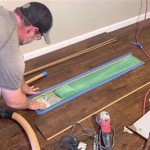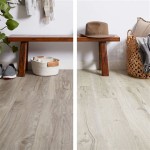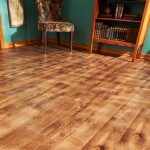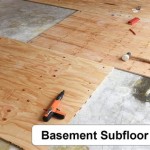The Difference Between Engineered Hardwood and Flooring Materials
In the realm of home renovation, choosing the right flooring material is a crucial decision that impacts both aesthetics and functionality. With a plethora of options available, understanding the distinctions between different types is essential. This article aims to shed light on the key differences between engineered hardwood and other popular flooring materials, providing a comprehensive guide to aid in your selection process.
Engineered Hardwood: A Blend of Durability and Versatility
Engineered hardwood flooring has gained immense popularity due to its unique combination of durability and versatility. Constructed from multiple layers of wood, with a thin veneer of hardwood on top, it offers a range of advantages. The core layers, typically plywood or high-density fiberboard, provide stability and resistance to warping, making it suitable for use in areas prone to moisture fluctuations. The top layer, known as the wear layer, determines the appearance and durability of the flooring. Thicker wear layers offer greater resistance to scratches, dents, and wear and tear, making them ideal for high-traffic areas.
One of the key benefits of engineered hardwood is its versatility. It can be installed in various ways, including floating, glue-down, and nail-down methods, allowing for flexibility in design and installation. Moreover, it is available in a wide array of styles, colors, and finishes, making it easy to complement any décor. The engineered construction also provides excellent sound insulation, reducing footfall noise and enhancing overall comfort.
Solid Hardwood: The Traditional Approach
Solid hardwood flooring, as the name suggests, is made entirely from solid wood planks. It is known for its timeless elegance and durability. Each plank is milled from a single piece of wood, showcasing the natural beauty and grain patterns. Solid hardwood flooring is highly prized for its longevity and ability to be refinished multiple times, allowing for years of enjoyment.
However, solid hardwood has certain limitations. It is more susceptible to warping and expansion due to moisture fluctuations, requiring careful installation and maintenance. It is also generally more expensive than engineered hardwood, particularly for higher-grade woods. Moreover, solid hardwood is not suitable for areas with high moisture levels, such as bathrooms and kitchens.
Laminate Flooring: A Budget-Friendly Option
Laminate flooring is a cost-effective alternative to engineered hardwood, offering a durable and stylish solution. It is made from a core layer of high-density fiberboard, covered with a photographic layer depicting wood, stone, or other materials. A protective wear layer sits on top, providing resistance to scratches and stains.
Laminate flooring is known for its ease of installation and maintenance. It is available in various styles and colors, providing a wide range of options to suit different tastes. However, laminate flooring lacks the natural beauty and warmth of real wood. It is also not as durable as hardwood flooring, making it less suitable for high-traffic areas. Additionally, laminate flooring is not as environmentally friendly as hardwood, as it is composed of synthetic materials.
Tile Flooring: A Classic and Versatile Choice
Tile flooring is a classic and versatile option, offering a wide range of colors, patterns, and materials. It is extremely durable and resistant to moisture, making it ideal for kitchens, bathrooms, and other high-traffic areas. Tile flooring is also easy to clean and maintain, making it a practical choice for families with young children or pets.
However, tile flooring can be cold and hard underfoot, requiring the use of rugs or mats for added comfort. It can also be expensive to install, particularly for larger areas. The installation process itself can be complex and time-consuming, requiring specialized tools and expertise.
Vinyl Flooring: A Durable and Water-Resistant Option
Vinyl flooring has undergone significant advancements in recent years, offering a practical and stylish alternative to traditional flooring materials. It is available in various styles, including plank, tile, and sheet, replicating the look of wood, stone, or other materials.
Vinyl flooring is highly durable, water-resistant, and easy to maintain. It is also relatively affordable, making it a popular choice for budget-conscious homeowners. However, vinyl flooring is not as environmentally friendly as hardwood or tile, as it is composed of synthetic materials. It also lacks the natural warmth and beauty of real wood.
In conclusion, selecting the right flooring material depends on your individual needs, budget, and aesthetic preferences. The information presented here provides a comprehensive overview of the key differences between engineered hardwood and other popular flooring materials, enabling you to make an informed decision that meets your specific requirements.

Solid Vs Engineered Hardwood Which Is Better

Hardwood Vs Engineered Wood Flooring Which Is Better Bessemeter

5 Differences Between Engineered Wood And Laminate Flooring

Engineered Hardwood Vs Laminate Flooring

What Is The Difference Between Spc Engineered And Solid Wood Floor Planks

What Is Engineered Wood Flooring Made Of And Beyond Blog

Solid Vs Engineered Hardwood Which Is Better

Types Of Hardwood Flooring Carpet One Floor Home

Lvp Vs Engineered Hardwood Find Your Perfect Floor

4 Things To Know Before An Engineered Hardwood Floor Carlisle Wide Plank Floors
See Also







